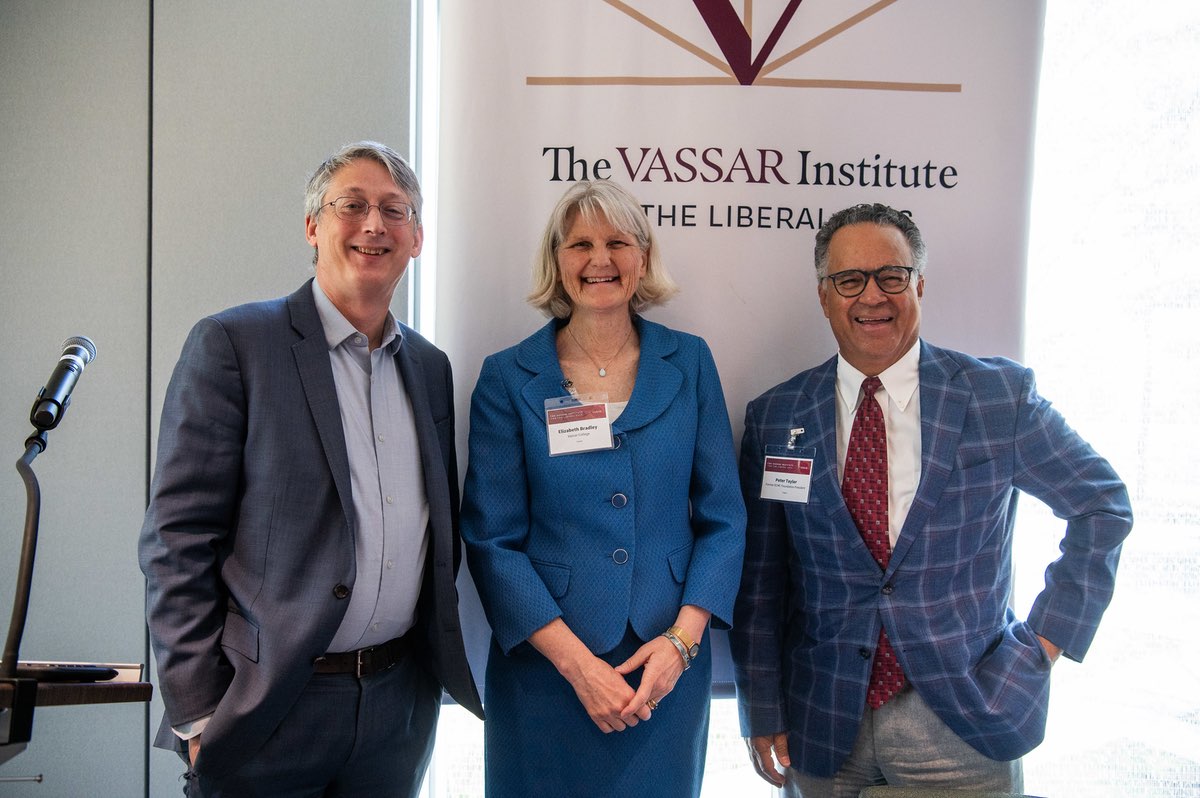Improving Graduation Rates Reveals Actionable Findings
Yesterday, Vassar College presented the findings from its nearly three years of study into why some colleges and universities—even those with limited resources—graduate their students at a far higher rate than others. The research was presented in the context of a convening of educators from a dozen institutions, foundation leaders, and policy makers at The Vassar Institute for the Liberal Arts.
Low graduation rates are a persistent problem in higher education, with the average college graduating only about half of the students who enroll. Not only is enrollment without completion a financial burden, but it also fails to imbue students with the many benefits a degree provides. (At Vassar, graduation rates typically exceed 90 percent.)
Given Vassar’s focus on educational equity and access, the school’s researchers set their sights on examining colleges with consistently higher-than-predicted graduation rates with the hopes of better understanding this issue, identifying potential ways to address it, and sharing best practices.
One of the papers from a study, which was funded by the Lumina Foundation, revealed that in colleges and universities with higher-than-predicted graduation rates, attention to student mental health was paramount. Even among colleges with very limited financial resources and negligible endowments, top-performing institutions that provided students with robust mental health support outperformed those that failed to do so. And while many institutions with large endowments graduate students at high levels, those who provide strong mental health services—regardless of financial strength—experienced high completion rates as well. President Elizabeth Bradley, senior author of the paper, said the data gathered indicated that the most successful institutions took a holistic approach. “One of the main takeaways of our study was that these schools integrate attention to mental health issues in everything they do,” Bradley said. “They have early warning signs in place that prevent the need for expensive care. It’s deeply embedded in the culture of the institution; it’s everybody’s job.” The lead author, Mariam Eshetu, reflected, “Student mental health support was ‘woven in’ the social structures of the college or university.”
In a second paper, led by Professor and Chair of Education Christopher Bjork, the researchers identified other prominent features of higher-performing institutions in terms of higher graduation rates including shared goals, leveraging inspiring institutional origin stories, inclusive approaches to decision making, organizational ambidexterity in pursuing multiple approaches to a shared goal, and effective management of organizational setbacks.
Wendy Maragh Taylor, Vassar’s Associate Dean of the College for Student Growth and Engagement and a key architect of the study, noted that most of these factors do not depend on the depth of the institution’s financial resources. “In most cases, it didn’t take a lot of money for these colleges to accomplish these things,” she said. “It was just a matter of having the proper priorities and strategies in place.”
Vassar researchers in another study focused on ways to improve graduation rates among community college students who enrolled with the intention of graduating from a four-year college. According to extant research, about 80 percent of those who enroll in community college report this is their goal, but fewer than 20 percent actually achieve it. The Vassar study, funded by ECMC Foundation, focused on an evaluation over time of outcomes associated with the school’s Exploring Transfer program. Exploring Transfer is a program the College has run for four decades that brings community college students to Vassar’s campus for six weeks to experience campus life and take liberal arts courses that reflect the type of courses they would encounter at four-year colleges. Study results revealed that 70 percent of the students who had completed the Exploring Transfer program since 2008 had already completed their four-year college degree, and another 15 percent were currently accepted or enrolled in a four-year degree program. Vassar recently scaled the program by helping to spark similar initiatives at Princeton, Bryn Mawr, and Haverford colleges.
Charlotte Gullick, a co-author, said Vassar’s Education Summit “highlights the work all of us have done on the challenges involved in improving college completion rates. Having community colleges and four-year colleges collaborating on research and practice improvements can help both types of institutions thrive.”
Maragh Taylor added, “The more students who graduate, the more educated the citizenry becomes and the better the decisions they make. This work is important, as a college degree still affords individuals the opportunity for better life outcomes. The research is clear about that. Our teams on both the Lumina and ECMC funded studies are glad to contribute to the conversation, and we hope the Education Summit will be the beginning of greater institutional collaborations to improve graduation rates nationally.”
Vassar College is a coeducational, independent, residential liberal arts college founded in 1861.
